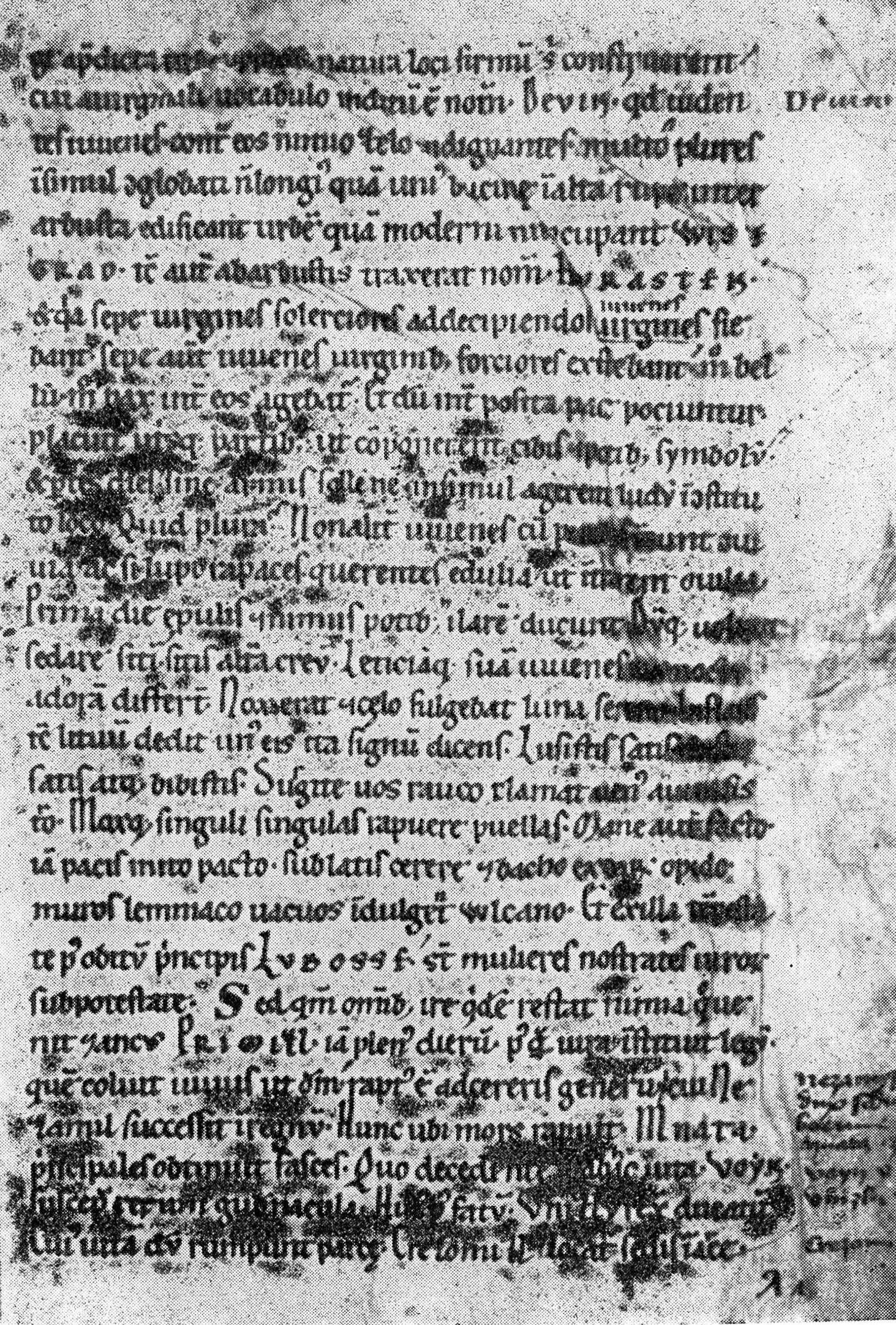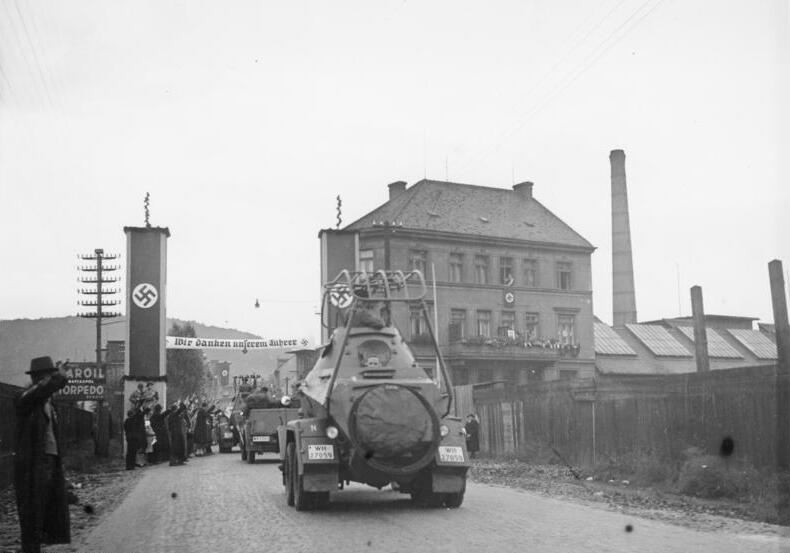|
Vlastislav (Litoměřice District)
Vlastislav (german: Watislaw) is a municipality and village in Litoměřice District in the Ústí nad Labem Region of the Czech Republic. It has about 200 inhabitants. Geography Vlastislav is located about west of Litoměřice and south of Ústí nad Labem. It lies in the Central Bohemian Uplands. The highest point is the hill Plešivec at above sea level. History The first written mention of Vlastislav is from 1184, but there was a gord already in the early Middle Ages. According to legend in '' Chronica Boemorum'', the gord was founded by Duke Vlastislav. Sights Vlastislav is known for the ruins of the Skalka Castle. The first documented owner of the castle was Petr of Skalka in 1357–1360, but the castle may be older. The castle was devastated by the Swedish army The Swedish Army ( sv, svenska armén) is the land force of the Swedish Armed Forces. History Svea Life Guards dates back to the year 1521, when the men of Dalarna chose 16 young able men as body g ... [...More Info...] [...Related Items...] OR: [Wikipedia] [Google] [Baidu] |
Obec
Obec (plural: ''obce'') is the Czech language, Czech and Slovak language, Slovak word for a municipality (in the Czech Republic, in Slovakia and abroad). The literal meaning of the word is "Intentional community, commune" or "community". It is the smallest administrative unit that is governed by elected representatives. Cities and towns are also municipalities. Definition Legal definition (according to the Czech code of law with similar definition in the Slovak code of law) is: ''"The municipality is a basic territorial self-governing community of citizens; it forms a territorial unit, which is defined by the boundary of the municipality."'' Every municipality is composed of one or more cadastre, cadastral areas. Every municipality is composed of one or more administrative parts, usually called town parts or villages. A municipality can have its own flag and coat of arms. Czech Republic Almost whole area of the republic is divided into municipalities, with the only exception be ... [...More Info...] [...Related Items...] OR: [Wikipedia] [Google] [Baidu] |
České Středohoří
The České středohoří – Central Bohemian Uplands or Central Bohemian Highlandse.g. ''The New Encyclopaedia Britannica, Volume 31'', Encyclopaedia Britannica, 1998, p. 371 – is a mountain range located in northern Bohemia in the Czech Republic. The range is about 80 km long, extending from Česká Lípa in the northeast to Louny in the southwest and from Litoměřice in the south to Děčín in the north, and is intersected by the river Elbe. The mountains, which are of volcanic origin, have distinctively sharp solitary peaks. The uplands are a Protected Landscape Area ( cs, Chráněná krajinná oblast – CHKO); consequently, construction through the area of the D8 motorway – part of European route E55 between Dresden and Prague – was very controversial. Despite this, the motorway was finally completed in December 2016. Geographical data relating to this area were used in the creation of the landscape for the military simulation video game Video games, a ... [...More Info...] [...Related Items...] OR: [Wikipedia] [Google] [Baidu] |
Christoph Schönborn
Christoph Maria Michael Hugo Damian Peter Adalbert Graf von Schönborn, O.P. (; born 22 January 1945) is a Bohemian-born Austrian Dominican friar and theologian, who is a cardinal of the Catholic Church. He serves as the Archbishop of Vienna and was the Chairman of the Austrian Bishops' Conference from 1998 to 2020. He was elevated to the cardinalate in 1998. He is also Grand Chaplain of the Order of the Golden Fleece (Austrian branch), of which he has been a member since 1961. He is a member of the formerly sovereign princely House of Schönborn, several members of which held high offices of the Holy Roman Empire and the Catholic Church as prince-bishops, prince-electors and cardinals. Family and early life Schönborn was born at Skalka Castle, west of Litoměřice in Bohemia (then Czechoslovakia, now part of the Czech Republic), the second son of , and Eleonore Schönborn. He is a member of the princely House of Schönborn whose members have historically borne the title of ... [...More Info...] [...Related Items...] OR: [Wikipedia] [Google] [Baidu] |
Bergfried
''Bergfried'' (plural: ''bergfriede''; English: ''belfry''; French: ''tour-beffroi''; Spanish: ''torre del homenaje'') is a tall tower that is typically found in castles of the Middle Ages in German-speaking countries and in countries under German influence. Friar describes it as a "free-standing, fighting-tower".Friar (2003), p 36. Its defensive function is to some extent similar to that of a keep (also known as a ''donjon'') in English or French castles. However, the characteristic difference between a bergfried and a keep is that a bergfried was typically not designed for permanent habitation. Overview The living quarters of a castle with a bergfried are separate, often in a lower tower or an adjacent building called a ''palas'' (an English-style keep combines both functions of habitation and defence.) Consequently, a bergfried could be built as a tall slender tower with little internal room, few vaults and few if any windows. The bergfried served as a watchtower and as a ref ... [...More Info...] [...Related Items...] OR: [Wikipedia] [Google] [Baidu] |
Thirty Years' War
The Thirty Years' War was one of the longest and most destructive conflicts in European history The history of Europe is traditionally divided into four time periods: prehistoric Europe (prior to about 800 BC), classical antiquity (800 BC to AD 500), the Middle Ages (AD 500 to AD 1500), and the modern era (since AD 1500). The first early ..., lasting from 1618 to 1648. Fought primarily in Central Europe, an estimated 4.5 to 8 million soldiers and civilians died as a result of battle, famine, and disease, while some areas of what is now modern Germany experienced population declines of over 50%. Related conflicts include the Eighty Years' War, the War of the Mantuan Succession, the Franco-Spanish War (1635–1659), Franco-Spanish War, and the Portuguese Restoration War. Until the 20th century, historians generally viewed it as a continuation of the religious struggle initiated by the 16th-century Reformation within the Holy Roman Empire. The 1555 Peace of Augsburg atte ... [...More Info...] [...Related Items...] OR: [Wikipedia] [Google] [Baidu] |
Swedish Empire
The Swedish Empire was a European great power that exercised territorial control over much of the Baltic region during the 17th and early 18th centuries ( sv, Stormaktstiden, "the Era of Great Power"). The beginning of the empire is usually taken as the reign of Gustavus Adolphus, who ascended the throne in 1611, and its end as the loss of territories in 1721 following the Great Northern War. After the death of Gustavus Adolphus in 1632, the empire was controlled for lengthy periods by part of the high nobility, such as the Oxenstierna family, acting as regents for minor monarchs. The interests of the high nobility contrasted with the uniformity policy (i.e., upholding the traditional equality in status of the Swedish estates favoured by the kings and peasantry). In territories acquired during the periods of ''de facto'' noble rule, serfdom was not abolished, and there was also a trend to set up respective estates in Sweden proper. The Great Reduction of 1680 put an end to th ... [...More Info...] [...Related Items...] OR: [Wikipedia] [Google] [Baidu] |
Vlastislav
{{for, a Czech village, Vlastislav (Hazlov) Vlastislav was mythological prince of Lucko (by Žatec). Son of legendary Czech prince Vojen, a brother another prince Vnislav. Dalimil´s chronic and Kosmas don't match in this what when was he died prince Nezamysl. Dalimil writes: The people of Lucko was Bohemian tribe by legends and their rulers of Přemyslids Dynasty. By Kosmas: Lucko ceased the rule of prince Neklan Neklan was the sixth of the seven Bohemian mythical princes between the (also mythical) founder of the Přemyslid dynasty Přemysl the Ploughman and the first historical prince Bořivoj. The names of the princes were first recorded in Cosmas chro ... whose an army in the conflict by Tursko scored a hard Lucko's army of Vlastislav. Mythical Bohemian princes Slavic mythology Mythological kings Fictional Czech people ... [...More Info...] [...Related Items...] OR: [Wikipedia] [Google] [Baidu] |
Chronica Boemorum
The ''Chronica Boemorum'' (Chronicle of the Czechs, or Bohemians) is the first Latin chronicle in which the history of the Czech lands has been consistently and relatively fully described. It was written in 1119–1125 by Cosmas of Prague. The manuscript includes information about historical events in Czech land from ancient times to the first quarter of the 12th century. At the same time, the Chronicle is not limited to Czech national historiography, also revealing the relationship between various European states during the 10th–12th centuries. The author of the chronicle had been known as the dean of the chapter of St. Vitus Cathedral in Prague Cosmas of Prague. Being a valuable historical source, especially as it relates to events whose contemporary was Cosmas, the Czech Chronicle in many respects set the direction for the subsequent development of the Czech annals. The chronicler worked on the chronicle until his death in 1125. Despite of some inaccuracies and a vivid ex ... [...More Info...] [...Related Items...] OR: [Wikipedia] [Google] [Baidu] |
Gord (archaeology)
A gord is a medieval Slavonic fortified settlement, usually built on strategic sites such as hilltops, riverbanks, lake islets or peninsulas between the 6th and 12th centuries CE in Central and Eastern Europe. The typical gord usually consisted of a group of wooden houses surrounded by a wall made of earth and wood, and a palisade running along the top of the bulwark. Etymology The term ultimately descends from the reconstructed Proto-Indo-European root '' ǵʰortós'', enclosure. The Proto-Slavic word ''*gordъ'' later differentiated into grad ( Cyrillic: град), gorod (Cyrillic: город), gród in Polish, gard in Kashubian, etc. It is the root of various words in modern Slavic languages pertaining to fences and fenced-in areas (Belarusian гарадзіць, Ukrainian horodyty, Czech ohradit, Russian ogradit, Serbo-Croatian ograditi, and Polish ogradzać, grodzić, to fence off). It also has evolved into words for a garden in certain languages. Additionally, ... [...More Info...] [...Related Items...] OR: [Wikipedia] [Google] [Baidu] |
Ústí Nad Labem
Ústí nad Labem (, , ) is a city in the Czech Republic. It has about 92,000 inhabitants. It is the capital of its eponymous region and district. It is a major industrial centre and, besides being an active river port, is an important railway junction. Administrative division Ústí nad Labem is divided into four boroughs, which are further divided into 22 administrative parts: *Ústí nad Labem-město (parts Ústí nad Labem-centrum, Božtěšice, Bukov, Habrovice, Hostovice, Klíše, Předlice, Skorotice, Strážky, Vaňov and Všebořice); *Ústí nad Labem-Neštěmice (parts Krásné Březno, Mojžíř and Neštěmice); *Ústí nad Labem-Severní terasa (part Severní Terasa); *Ústí nad Labem-Střekov (parts Brná, Církvice, Kojetice, Olešnice, Sebuzín, Střekov and Svádov). Etymology The name of Ústí nad Labem is formed from the Old Czech ' ("river mouth") and ' (the Elbe River). It thus literally means "Mouth-upon-the-Elbe", in reference to its location at the B ... [...More Info...] [...Related Items...] OR: [Wikipedia] [Google] [Baidu] |
Regions Of The Czech Republic
Regions of the Czech Republic ( cs, kraj, plural: ''kraje'') are higher-level territorial self-governing units of the Czech Republic. Every region is governed by a regional council, headed by a governor (''hejtman''). Elections to regional councils take place every four years. According to the Act no. 129/2000 Coll. ("Law on Regions"), which implements Chapter VII of the Czech Constitution, the Czech Republic is divided into thirteen regions and one capital city with regional status as of 1 January 2000. History The first ''kraje'' were created in the Kingdom of Bohemia during the reign of Charles IV in the 14th century and they lasted till 1862/68. ''Kraje'' were reintroduced in 1949 in Czechoslovakia and still exist today (except for the early 1990s) in its successor states despite many rearrangements. Competences Rights and obligations of the regions include: *Establishment of secondary schools; *Responsibility for hospitals and social facilities; *Construction and repai ... [...More Info...] [...Related Items...] OR: [Wikipedia] [Google] [Baidu] |






